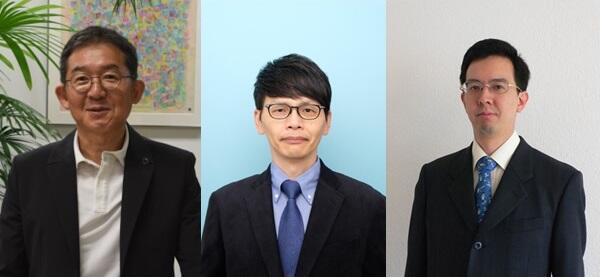A new approach to academic drug discovery has begun to emerge, where instead of a single lead scientist translating basic research results into clinical practice, individual basic science researchers and clinical researchers are leveraging their respective strengths to solve clinical issues together. Based on research results obtained by Professor Takashi Yahata of Tokai University School of Medicine, a research group led by Associate Professor Taku Fujimura of Tohoku University Hospital collaborated with six domestic medical institutions to conduct a Phase II investigator-initiated clinical trial, where combination therapy with a plasminogen activator inhibitor 1 (PAI-1) inhibitor (TM5614) and an immune checkpoint inhibitor (nivolumab) was used to treat malignant melanomas that were difficult to be surgically completely removed and unresponsive to immune checkpoint inhibitors. They confirmed that the high safety and therapeutic efficacy of the combination therapy exceed those of conventional treatments. The researchers plan to conduct Phase III trials next year with increased number of participating medical institutions.

In Japan, the incidence of melanomas is 0.6 patients per 100,000 people, lower than those in the United States of America (12.7) and Australia (33.6). However, the proportion of malignant melanomas is high, such acral lentiginous melanoma, accounting for 41% of cases. Since these melanomas have few genetic mutations, the immune system is less effective against them, and anti-programmed cell death protein 1 (anti-PD1) antibodies have a weak response. For example, the response rate of melanomas to nivolumab is approximately 22% in Japan, less than the 30ー40% rate in Europe and the United States of America.
Combination therapy with nivolumab and ipilimumab is used as a second-line option after the first treatment with anti-PD1 antibodies. The response rates for the combination therapy are 21% overseas and 13.5% in Japan. Furthermore, severe immune-related side effects occur in more than half of the patients, which is four times more than that resulting from single nivolumab treatment. Additionally, the side effects require several months of hospitalization or holding off from the cancer treatment itself.
To solve this problem, Fujimura began developing a combination therapy with anti-PD1 antibodies and interferon-beta. However, he had to stop his project owing to circumstances with the pharmaceutical company. He met Yahata at that time.
Cancers that overexpress the urokinase-type plasminogen activator (uPA) protein have a poor prognosis. Since PAI-1 inhibits uPA, patients with overexpressed PAI-1 were thought to have a better prognosis. However, epidemiological studies have shown that they have a worse prognosis, a phenomenon called the PAI-1 paradox.
An explanation for this paradox is that the binding of PAI-1 with uPA may cause cancer cells to detach from the extracellular matrix, and the result of their migration and metastasis is increased malignancy. Yahata, formerly in the basic medical research field, said, "Since the previous experiments showed that PAI-1 can make cancer cells immobile, control of the migratory ability alone is not enough to resolve the paradox, and we needed to analyze it from another perspective."
Since transforming growth factor beta (TGFβ), which suppresses cancer immunity, strongly induces PAI-1, Yahata conducted an analysis focusing on PAI-1 regulation of the immune system. He transplanted PAI-1-overexpressing cells into mice and observed that immune checkpoint inhibitors were no longer effective in the rodents. Conversely, administering PAI-1 inhibitors to the mice decreased programmed death-ligand 1 (PD-L1) expression and increased the effectiveness of immune checkpoint inhibitors. Therefore, he revealed that PAI-1 induces the expression of PD-L1 to suppress cancer immunity. He also discovered that PAI-1, uPA, urokinase receptor (uPAR), and low-density lipoprotein receptor-related protein 1 (LRP1) form a tetramer, which activates the Janus kinase/signal transducer and activator of transcription (JAK/STAT) pathway and increases PD-L1 expression.
Furthermore, experiments on mice transplanted with multiple types of cancer cells showed that even a single PAI-1 inhibitor could exert a tumor-suppressive effect, and when the activator is combined with an immune checkpoint inhibitor, it exerts an antitumor effect marked for multiple cancer types. The antitumor effect is due to the PAI-1 inhibitor cancelling immunosuppression, activating cancer-aggressive T cells, and reducing the intratumoral infiltration of immunosuppressive cells.
The PAI-1 inhibitor used by Yahata was originally developed by Professor Toshio Miyata of Tohoku University School of Medicine when he was at Tokai University. Miyata said, "Since I thought that Professor Yahata might be able to make new discoveries, I provided him with the inhibitor, and he responded to my expectations with exciting results."
Miyata brought together Fujimura and Yahata, and their meeting produced the investigator-initiated clinical trial. Fujimura said, "While collaborating with Professor Yahata and consulting with him, I felt our future success."
In the clinical trial, 29 patients who did not respond to nivolumab alone were treated with nivolumab and the PAI-1 inhibitor for over 8 weeks. The response rate was 24.1%, nearly twice as much as that achieved with nivolumabーipilimumab combination therapy, and the disease control rate was extremely high at 62%. There were seven cases of serious adverse events, two of which were of liver dysfunction causally related to the investigational drug, indicating that it is much safer than the nivolumabーipilimumab combination. Fujimura said, "I was surprised to obtain a good result in a short period of 8 weeks. There were requests from multiple hospitals to continue the clinical trial. I hope to conduct Phase III trials at 14 to 15 facilities next year."
The assigned tasks were as follows: Miyata synthesized a PAI-1 inhibitor from thousands of compounds for a purpose completely unrelated to melanoma treatment; Yahata used the PAI-1 inhibitor to treat PAI-1-associated cancer out of intellectual curiosity; and Fujimura applied his findings to solve the clinical problems that he had been working on. Combining environments where researchers can maximize their performance lead to drug discovery that cannot be undertaken by a pharmaceutical company alone. The present achievements have scientific and clinical significance and demonstrate this new research model accomplished through academic research collaboration.
This article has been translated by JST with permission from The Science News Ltd. (https://sci-news.co.jp/). Unauthorized reproduction of the article and photographs is prohibited.




